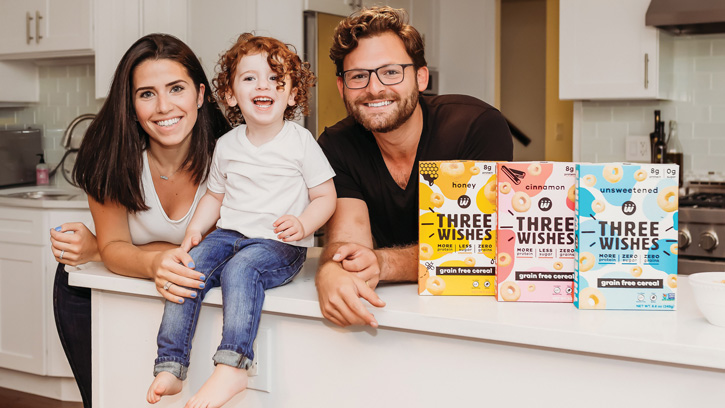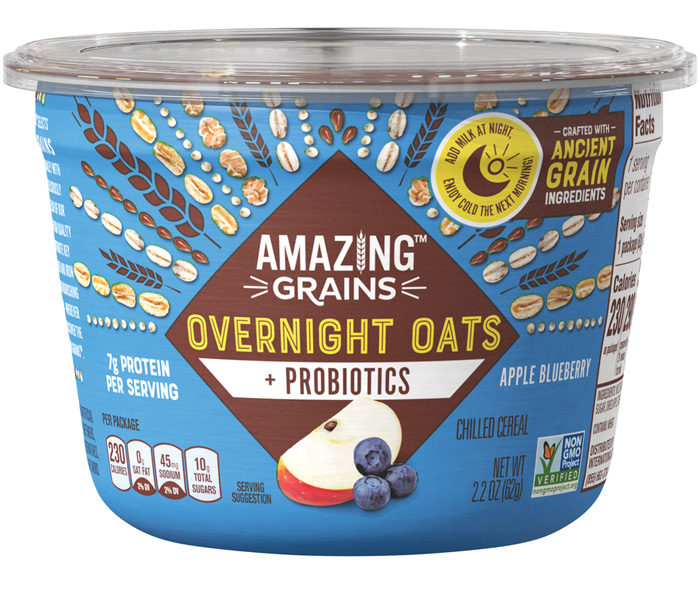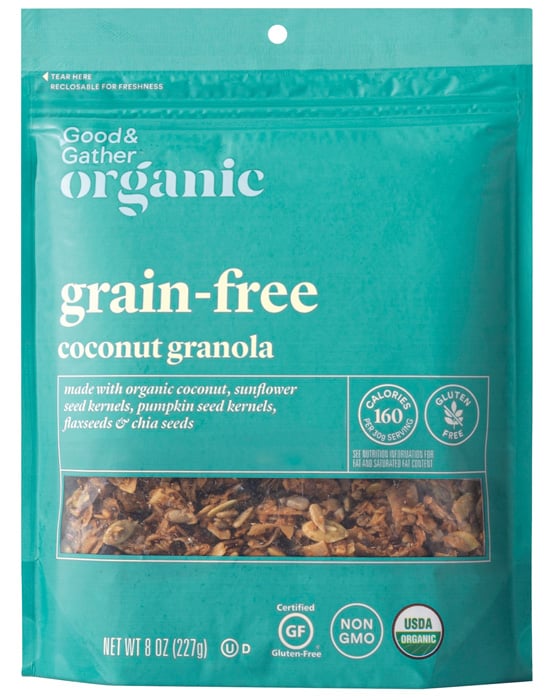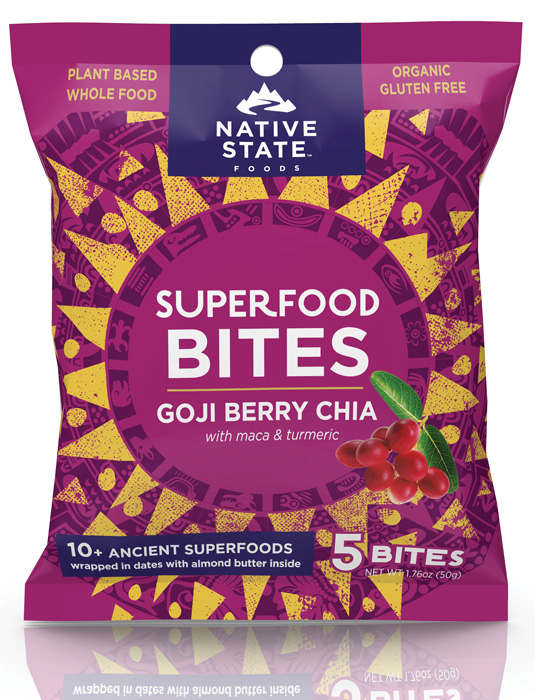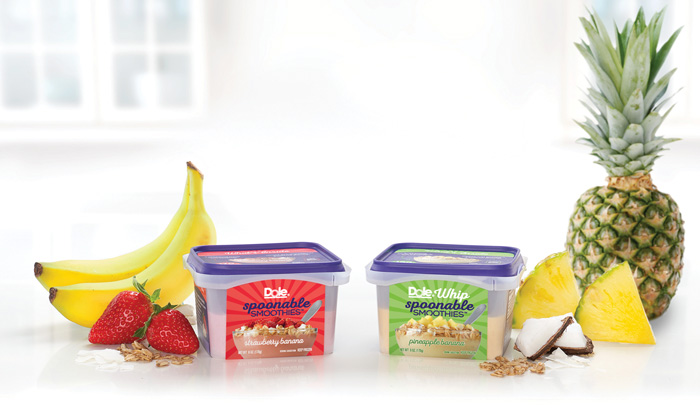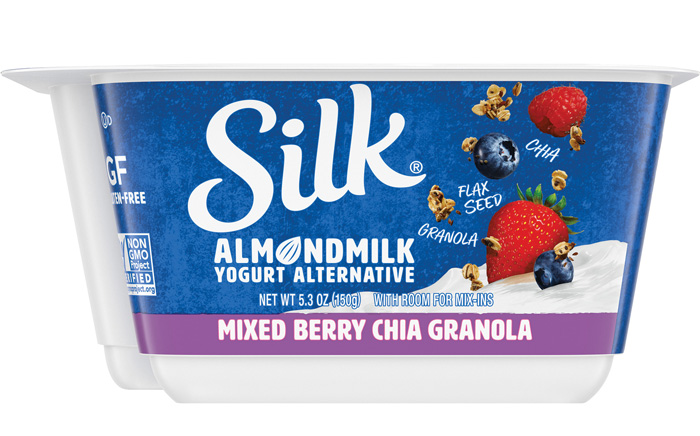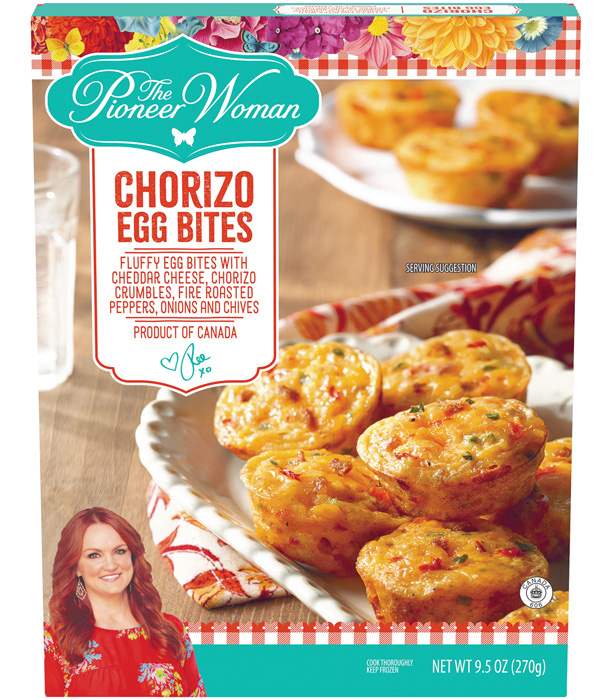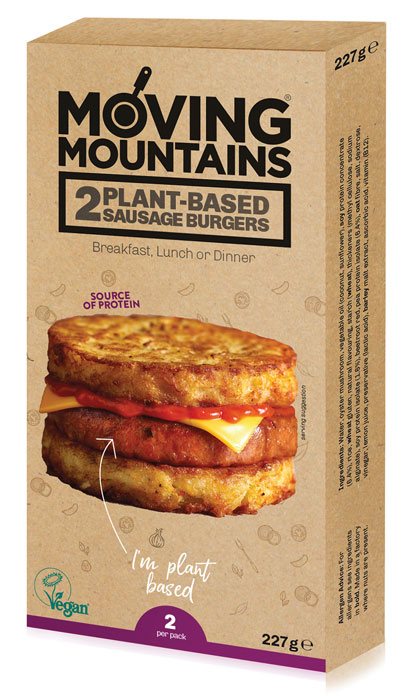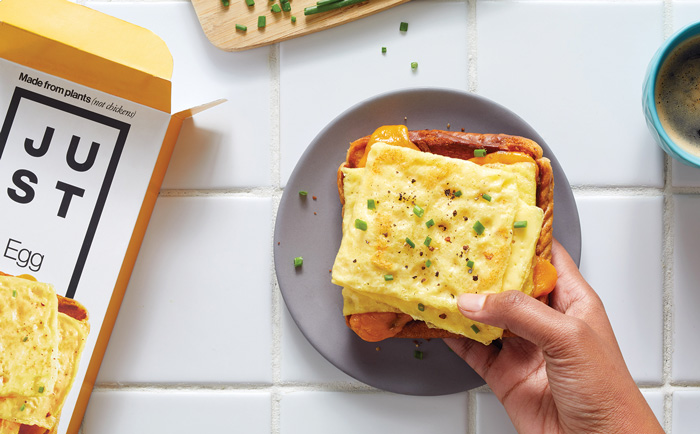
What’s for Breakfast?
Consumers may waffle on whether breakfast is the most important meal of the day, but their preference for food that is healthy, convenient, and offers alternatives to dairy and grain is driving product development across all categories of breakfast food.
Article Content
Breakfast is the Rodney Dangerfield of meals—the least respected, most skipped, and most rushed meal of the day.
Half of global consumers say they spend less than 15 minutes on breakfast, according to a 2017 survey by DSM of 3,500 consumers in Germany, the Netherlands, Spain, France, Sweden, the United Kingdom, and the United States.
But even 15 minutes may be too long for the almost four in 10 who said they skipped breakfast because they lacked time for the meal.
Nonetheless, skipping breakfast may carry its own risks. A March 2019 study from Japan published in Psychiatry Research found a significant link between skipping breakfast and symptoms of depression. Other studies have found breakfast skipping associated with elevated factors for heart disease, including obesity, diabetes, and high cholesterol levels. Although the jury is still out, conventional wisdom holds that breakfast eaters tend to be slimmer and healthier than those who skip breakfast.
Health concerns are more likely to influence breakfast consumption than any other meal because consumers tend to choose healthier foods and snacks earlier in the day. For example, over one-third of participants in the 2019 Innova Consumer Survey prefer fruit as a morning snack while one-quarter say the same for yogurt and juice. Healthier consumption preferences like these tend to influence innovation trends for breakfast foods, with cereals leading the way.
Grains Stake a Claim
Hot and cold cereals are synonymous with breakfast, and product innovators are finding new ways to make cereal “better for you.” These efforts have generally focused on key areas like cutting sugar, increasing fiber and protein content, and eliminating unhealthy animal-based ingredients.
“No added sugar” (or no sugar added) has emerged as one of the top health claims for hot and cold cereal launches globally. According to the Innova Database, launches of hot and cold cereal products making the claim grew at a compound annual growth rate (CAGR) of just under 11% for the period from 2017 to 2019, with most of the growth coming from Europe, where the claim expanded at a nearly 16% CAGR. In the United States, the claim is also growing rapidly but is still relatively rare.
Launched earlier this year in the United Kingdom and the Netherlands, W.K. Kellogg By Kids No Added Sugar Multigrain Shapes Cereal uses fruit and vegetable ingredients to reduce sugar content. Flavors like Blueberry, Apple and Beetroot, as well as Strawberry, Apple and Carrot, show how fruit and vegetable ingredients can help lower sugar content to around 7 or 8 grams per 100-gram serving.
Tasty Basics Muesli Nuts and Seeds (Netherlands) is said to contain “70% fewer carbohydrates,” apparently thanks to unprocessed ingredients and a formulation rich in protein and fiber.
Nestlé is also looking for sugar solutions in its cereal business. In Spain, the food giant recently debuted Fitness Slow Release Energy Granola in Honey and Chocolate, Almonds and Quinoa flavors. The secret behind the “slow release” is the use of isomaltulose, a carbohydrate found in honey and beets said to digest four to five times more slowly than common sugar, resulting in a gradual release of energy over a longer period.
Other cereal makers are using new sweeteners to win the sugar reduction game. Magic Spoon Cereal (U.S.) has zero grams of sugar per serving thanks to a blend of sweeteners that includes allulose, monk fruit extract, and stevia extract.
Three Wishes Grain Free Cereal (U.S.), developed by the husband-and-wife team of Ian and Margaret Wishingrad, uses chickpeas and pea protein to help drive sugar content down to just 3 grams per serving while capitalizing on other major cereal trends such as elevated protein content and vegan formulation.
Launches of cereals claiming to be vegan grew at over a 15% CAGR for the period from 2017 to 2019, with some calling out the use of plant-based protein. In the United Kingdom, W. K. Kellogg’s Plant Protein Crunch Cereal in Original and Dark Chocolate and Coconut flavors takes that route while Iwon Organics Protein Os Plant Based Cereal does the same in the United States.
Other protein-rich launches use an array of ingredients to tap into consumer interest in protein. Milk protein powder and skimmed milk powder helped elevate the protein content for Stoats Traditional Scottish High Protein Porridge Pot (UK). Egg whites boost the protein content for RXBAR’s RX A.M. Oats (U.S.) hot cereal, with 12 grams of protein per serving.
Insect-based protein is even finding its way into the market. Goodlife Breakfast Bugs Protein Porridge (Netherlands) is an instant hot cereal containing oatmeal, buffalo worm flour, and seeds. Protein content is 23 grams per serving.
Responding to consumers’ growing interest in wellness and immunity, probiotics are showing strong breakfast potential, with cold and hot cereal launches featuring the claim rising at a CAGR of 23.8% from 2017 to 2019 in North America.
The trend also extends to bars. Kind Breakfast Bar with Probiotics (U.S.) uses a “patented vegan strain of probiotic cultures” while Purely Elizabeth Ancient Grain Granola Bar (U.S.) adds a probiotic boost with GanedenBC30 probiotics, which are said to survive the baking process.
In the overnight oats category, Amazing Grains Apple Blueberry Overnight Oats Chilled Cereal Plus Probiotics (U.S.) is also benefitting from the addition of probiotics.Overnight oats have come on strong since the concept moved from social media to consumer kitchens as a way to time shift and prepare a healthful breakfast the night before. Global launches of products featuring “overnight oats” nearly tripled between 2017 and 2019, according to the Innova Database.
Grain-Free Gains Traction
An up-and-coming formulation trend to keep an eye on is the “grain-free breakfast,” which shows potential as a successor to gluten-free.
Forager Project Organic Grain Free Os Cinnamon Gluten Free Cereal (U.S.) is a cinnamon toasted cassava cereal with plant protein. Target’s Good and Gather Organic Grain Free Coconut Granola (U.S.) shows grain-free moving into private label.
Grain-free innovation is also evident in quick breakfast products like muffins, which have long been a no-go zone for those suffering from celiac disease. It is estimated that one in every 100 people globally is affected by celiac disease, according to the Celiac Disease Foundation.
The Udi’s brand—which helped put gluten-free products on the map—senses the opportunity with Udi’s Gluten Free Grain Free Chocolate Zucchini Muffins (U.S.). Despite the callout to zucchini, cassava flour actually outranks zucchini on the ingredient label. Cassava flour assumes more of a starring role with Mikey’s Grain Free Cassava Flour Tortillas (U.S.), a product said to be perfect for breakfast burritos.
Birch Benders Pancake and Waffle Mix (U.S.), a gluten-free, grain-free launch, uses a combination of almond flour, eggs, tigernut flour, and organic coconut flour to replace traditional grain ingredients. Tigernut, a nutrient-dense root that looks like a peanut, was a staple of the original Paleo Diet and is gaining interest from food makers.
Bakery Powers Up With Protein
When it comes to bakery products, an important driver of new product innovation is protein. According to a 2019 Innova Trends Survey, 65% of global consumers say that protein content influences their purchase decision either “a lot” or “quite a bit.”
Kodiak Cakes Protein Packed Power Waffles (U.S.) offers consumers 12 grams of protein per serving, derived from sources like egg whites, wheat protein isolate, whey protein concentrate, and whey protein isolate. Pioneer Protein Quick Bread and Muffin Mix (U.S.) delivers 7 grams of complete protein per serving with ingredients like whey protein concentrate, pea protein isolate, and rice protein.
Milk protein concentrate, whey protein concentrate, and egg protein powder help deliver a whopping 57 grams of protein per serving for Prozis Instant Protein Pancake Mix with Salted Caramel Flavor (China), a product said to be suitable “for athletes and dieters.”
Portability matters for breakfast bakery products and is driving innovation in breakfast biscuits and a newer type of quick breakfast item—breakfast bites.
Belvita Gluten Free Soft Bake Bites (Australia) in flavors like Raspberry and Vanilla Bean are billed as “delicious wholesome bites that are packed with flavor and made with real ingredients.”
Native State Superfood Bites (U.S.) in flavors like Goji Berry Chia and Blueberry Ginger are made with 10 ancient superfoods, including maca, turmeric, and chia seeds, for an energy boost along with focus and cognitive support.
Veggie- and Fruit-Forward
Global consumers are taking steps to eat healthier and that includes eating more vegetables. A 2019 Innova Diet Trends Survey found that two-thirds of consumers in the United States, the United Kingdom, China, and Mexico who said they are making changes to their diets also reported trying to eat more vegetables.
But are consumers ready for a breakfast bread made with beets? Netherlands-based Albert Heijn is poised to find out with its Ah Specialiteit Bread with Beet made with 45% beet. A second variety—Bread with Carrot— is claimed to be made with 45% carrot.
Garden Lites Veggies Made Great Veggie Bacon and Potato Frittata (U.S.) also makes the case for vegetables for breakfast as it is “packed with cauliflower, potato, onions, and veggie bacon made from pinto beans.”
Another avenue for delivery of vegetables (and fruit) are breakfast smoothies and hybrid offerings like açai bowls. One company taking an innovative approach is Dole. The brand’s Dole Spoonable Smoothies (U.S.) takes a drinkable smoothie and melds it with an açai bowl-like product for a new fruit-forward, quick breakfast offering.
“What began as a trend with açai bowls has translated into a broader smoothie bowl trend. We’re seeing them pop up all over Instagram and Pinterest as consumers hunt for a delicious new take on fruit for breakfast,” says Erin Fasano, director of marketing, frozen, at Dole Packaged Foods.
The spoonable smoothie concept also has the potential to invigorate the yogurt category while sharpening the focus on breakfast. Schaerdinger Smoojo Bowl Yogurt (Austria) in flavors like Berry Açai and Mango does that with a crispy topping under the lid and a spoon included so the product can be consumed on the run.
Valio Clean Label Hawaiian Smoothie Yogurt with Pink Grapefruit and Pineapple Flavor (Russia) is three-quarters yogurt and one-quarter natural fruit, making it much more “fruit forward” than the average cup yogurt. Ditto for Glico Breakfast Pineapple Yogurt, which leverages the fresh, crispy texture of pineapple derived from a “super crisp manufacturing method.”
Dairy Adds Crunch
Texture is a vital part of the breakfast experience in general, but for yogurt and other dairy products, crunch is especially important as it increases the perception of satiety.
The so-called “crunch effect” as dubbed by researchers from Brigham Young University and Colorado State University in 2016 shows that the sound that food makes while chewing can help curb appetite. Researchers found that test subjects ate fewer pretzels if they could hear the crunch made when eating them.
Seeds and other inclusions add crunch to breakfast products like Arla And More Skyr And Seeds Icelandic Style Yogurt (Sweden) in flavors such as Peach and Raspberry with Buckwheat. Crunch is provided by sunflower seeds and poppy seeds.
Silk Almond Milk Yogurt Alternative Mixed Berry Chia Granola (U.S.) spoons up some “morning mojo” with mix-in flax and chia seed granola for a fruity mixed-berry almond milk yogurt alternative.
Danone Vanilla Flavored Homogenized Cheese with Millet in Honey and Cranberries (Poland) uses millet as an under-the-cap mix-in, adding crunch to homogenized cheese. Dairypure Cottage Cheese with Blackberries and Granola (U.S.) does much the same, with granola providing crunch. The product delivers 15 grams of protein per serving.
Along with texture, elevated protein content continues to power breakfast innovation in the dairy space. Danone YoPro High in Natural Protein Yoghurt (Australia) provides 15 grams of protein per serving and is available in an array of flavors, from Strawberry to Salted Caramel, to make the case for a “healthy breakfast option to power you through the day.”
Oath Organic Oat Milk (U.S.) leverages plant-based proteins like Almond and Pumpkin Seed Protein or Pumpkin Seed Protein for its respective Golden Turmeric and Golden Chia variants. Both are said to function as a delicious breakfast replacement or healthy snack.
Rokeby Farms Iced Coffee Whole Protein Breakfast Smoothie uses real Arabica coffee beans for a “natural jumpstart” to complement the 30 grams of protein the product delivers. The coffee flavor suggests the smoothie can also replace morning coffee products from companies such as Starbucks.
On a more fun and indulgent note, Quarki Schoko Orange Chocolate Coated Quark with Orange Filling (Germany) combines “airy-loose chocolate cream refined with orange flavor for connoisseurs who like to eat chocolate-orange already for breakfast.”
A Ready Meal Array
Another area of innovation that is making strides is the ready meal breakfast, which offers everything from plant-based meat alternatives to traditional breakfast foods like sausage and bacon to egg-based meal products and more. Egg-based innovation is moving in multiple directions to capitalize on breakfast opportunities.
The Pioneer Woman Chorizo Egg Bites (U.S.) from Kraft Heinz are fluffy, muffin-shaped egg bites with cheddar cheese, chorizo crumbles, fire-roasted peppers, onions, and chives for a quick breakfast or snack. The Perfect Bite Co. Egg Bites (U.S.) are similar, offering a quick, on-the-go breakfast/snack in flavors like Uncured Ham Plus Spinach with Gruyere.
Jimmy Dean Spicy Sausage Simple Scrambles (U.S.) is an egg-based microwaveable breakfast cup with 20 grams of protein per serving that can be consumed as a quick breakfast or on-the-go snack.
Eggs make a nutritious replacement for grain-based buns for Jimmy Dean Delights Broccoli and Cheese Egg’wich (U.S.), which is said to offer “the breadless breakfast.” Chicken sausage is sandwiched between two egg fritters, delivering 14 grams of protein and 280 calories per serving.
Waffles function as buns for Start Right Waffle Sliders (U.S.), a frozen egg-based breakfast sandwich in flavors like Turkey Sausage and Egg White and With Sausage and Egg, both for on-the-go consumption.
The need for quick nourishment in the morning has also guided the launch of McCain Nine Minute Potato Patties (Canada), offering breakfast in under 10 minutes “with no flipping required.” Mtr 2 Minute Breakfast Flattened Rice (India) requires no cooking at all; just add hot water for a 100% vegetarian breakfast. Similarly, boiling water is all that’s needed to make Seoul Breakfast Soup Yellow Grilled Sweetcorn Soup (South Korea), a sachet-packaged instant soup.
Bowl-based packaging is changing the face of frozen breakfast innovation much as it is for the larger ready meal category. According to the Innova Database, global launches of ready meals in bowl packaging more than tripled between 2016 and 2019.
On trend, then, are breakfast launches like Innovasian Morning Bowl Fried Rice with Eggs and Bacon (U.S.) which takes traditional breakfast foods like bacon and eggs and adds vegetables over a base of delicious fried rice for an Asian twist.
Healthy Choice Power Bowls All-Day Breakfast Pesto and Egg White Scramble Bowl (Canada) and Jimmy Dean Breakfast Bowl Loaded Potato (U.S.) are also on trend.
Plants Replace Meat
With 64% of global consumers saying they are increasingly incorporating plant ingredients into their diet—according to a 2019 Innova Trends Survey—innovation in plant-based meat alternatives for breakfast has accelerated.
Heck Vegan Breakfast Sausage (UK) is made from mushroom, carrot, and tomato and is flavored with parsley and sage. Ingredients like pea flour and chickpeas help to provide 5.5 grams of protein per serving.
Moving Mountains Plant-Based Sausage Burgers (UK) make a hearty breakfast or lunch with 11 grams of protein per serving, thanks to ingredients like mushrooms, soy protein concentrate, soy protein isolate, and pea protein isolate.
The Meatless Farm Co. Meat Free Breakfast Sausages (U.S.) contain no soy and are “lovingly made from plants,” including a “signature mix of pea protein and the finest plant-based ingredients.”
Plant-based ingredients are also being used to replace traditional dairy ingredients, as in the Daiya Deliciously Dairy Free Fiesta Breakfast Burrito (U.S.) made with “cheddar style shreds.”


